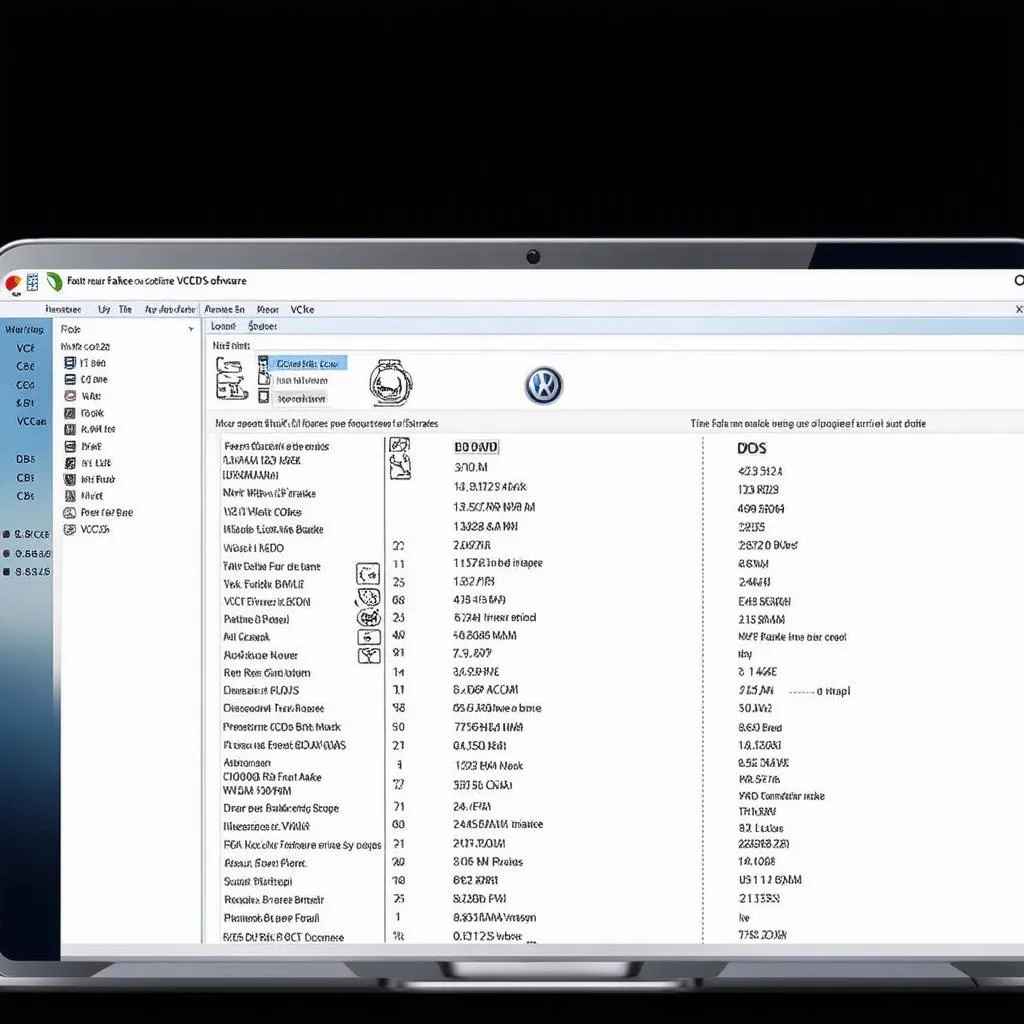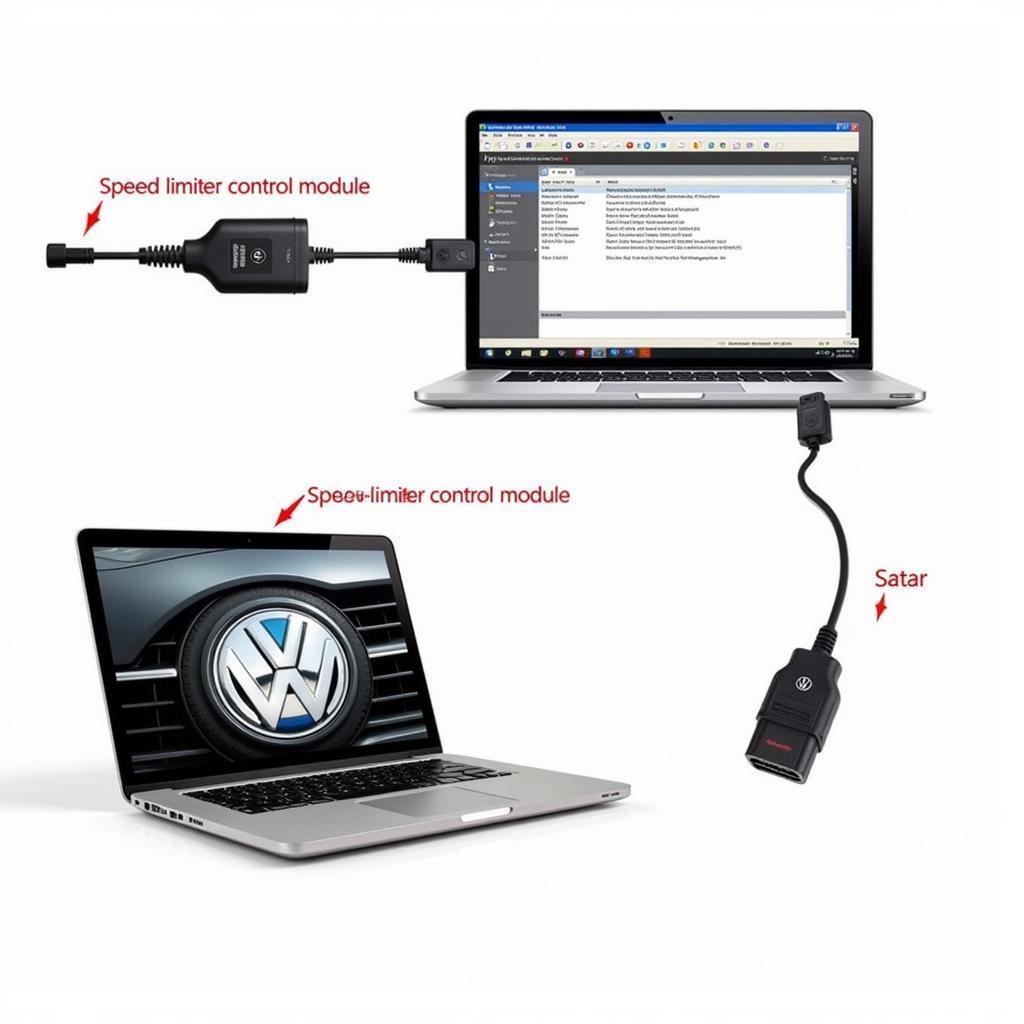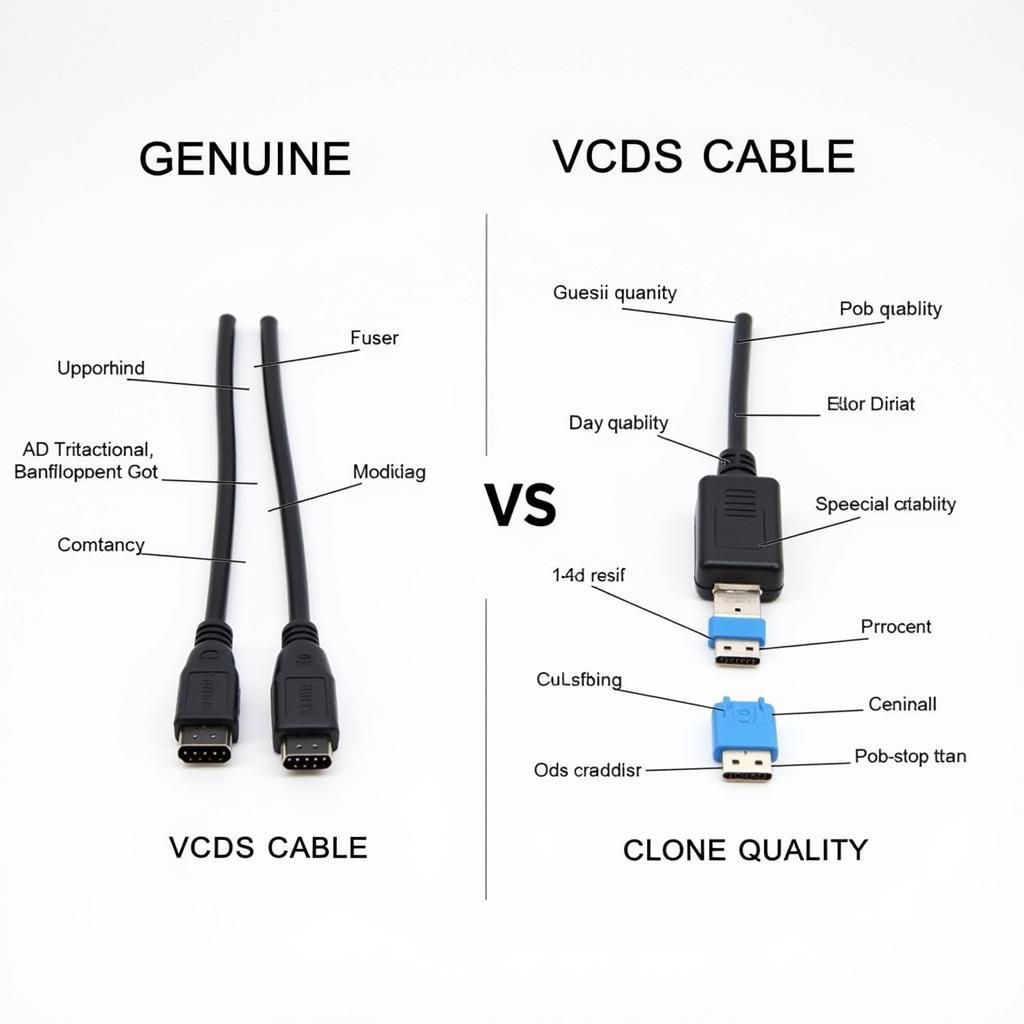As a car owner, understanding how to diagnose and address brake issues is crucial for safety and optimal vehicle performance. VCDS, a powerful diagnostic software suite for Volkswagen Audi Group (VAG) vehicles, can be your ally in this endeavor. This comprehensive guide delves into the world of VCDS rear brakes, providing you with the knowledge to troubleshoot and resolve common rear brake problems in your vehicle.
Understanding VCDS and Its Role in Rear Brake Diagnosis
VCDS, short for VAG-COM Diagnostic System, is a Windows-based software that allows you to communicate with your VAG vehicle’s control modules. Think of it as the key that unlocks a treasure trove of data about your car’s inner workings, including the braking system.
How VCDS Assists in Rear Brake Diagnosis:
- Reading and Clearing Fault Codes: When your car’s onboard computer detects an issue, it logs a fault code. VCDS allows you to read these codes, providing valuable insights into the nature of the problem. For instance, a code related to the ABS (Anti-lock Braking System) could indicate an issue with the rear brake sensors.
- Monitoring Live Data: VCDS enables you to monitor real-time sensor data from your car’s various systems. This includes crucial brake system parameters like brake pressure, wheel speed sensor readings, and ABS module status. By analyzing this data, you can pinpoint anomalies and narrow down the source of a problem.
- Performing Actuator Tests: VCDS facilitates actuator tests, which can be particularly useful for diagnosing issues with components like the ABS pump or the electronic parking brake. By commanding these components to activate, you can assess their functionality and identify potential malfunctions.
Common Rear Brake Issues Diagnosable with VCDS
A variety of rear brake issues can trigger fault codes and abnormal sensor readings detectable by VCDS:
- Worn Brake Pads and Rotors: As your rear brake pads wear down, the brake pad wear sensor sends a signal to the control module, which in turn triggers a warning light on your dashboard. VCDS can help confirm this diagnosis.
- Faulty Wheel Speed Sensors: The ABS system relies on wheel speed sensors to function correctly. A malfunctioning sensor can lead to issues like the ABS light illuminating or even affect the Electronic Stability Program (ESP). VCDS can read ABS module data and identify a faulty sensor.
- Electronic Parking Brake Malfunctions: Modern VAG vehicles often feature electronic parking brakes. Problems with this system can range from faulty switches to issues with the actuator itself. VCDS allows you to run diagnostic tests on the electronic parking brake system.
- Brake Fluid Issues: Low brake fluid levels or air in the brake lines can severely compromise braking performance. While not directly diagnosable with VCDS, the software can reveal symptoms related to these issues, prompting you to check the brake fluid.
 VCDS Rear Brakes Diagnosis
VCDS Rear Brakes Diagnosis
Using VCDS to Diagnose Rear Brake Problems: A Step-by-Step Guide
Let’s outline a general approach to diagnosing rear brake issues using VCDS:
- Connect VCDS to Your Vehicle: Begin by connecting your VCDS interface to your vehicle’s OBD-II port, usually located under the dashboard on the driver’s side.
- Launch VCDS and Establish Connection: Launch the VCDS software on your computer and establish communication with your vehicle’s control modules.
- Scan for Fault Codes: Navigate to the “Auto-Scan” function within VCDS to initiate a comprehensive scan of all your vehicle’s control modules for stored fault codes. Pay close attention to codes logged in the ABS, ESP, and Parking Brake modules.
- Analyze Fault Codes: Once the scan is complete, note down any relevant fault codes. VCDS provides detailed descriptions of each code, which can guide you toward the potential source of the problem.
- Examine Live Data: Depending on the symptoms and fault codes, delve into the live data stream for relevant modules. Monitor parameters such as wheel speed sensor readings, brake pressure values, and the status of the ABS and electronic parking brake systems.
- Perform Actuator Tests: If the issue points towards a specific component like the ABS pump or electronic parking brake actuator, utilize VCDS to perform targeted actuator tests. This can help confirm or rule out component malfunctions.
Interpreting VCDS Results and Taking Action
Successfully diagnosing a rear brake issue using VCDS is just the first step. It’s crucial to interpret the results correctly and take appropriate action to rectify the problem.
- Consult Repair Manuals: Refer to your vehicle’s repair manual or reputable online resources for guidance on interpreting specific fault codes and sensor readings.
- Seek Professional Assistance: If the diagnosis points towards a complex issue or you’re not comfortable tackling the repair yourself, it’s always best to consult a qualified mechanic, especially for critical safety systems like brakes.
 Mechanic Inspecting Rear Brakes
Mechanic Inspecting Rear Brakes
FAQs about VCDS and Rear Brakes
Q: Can I use VCDS to retract the electronic parking brake if it’s stuck engaged?
A: Yes, VCDS allows you to access the electronic parking brake module and potentially release the brakes electronically. However, proceed with caution and consult your vehicle’s repair manual for the correct procedure.
Q: My ABS light is on, but VCDS isn’t showing any fault codes. What could be the issue?
A: While VCDS is a powerful tool, it might not always capture every issue. A failing ABS module or wiring harness problems could be potential culprits.
Q: Can I use VCDS to adjust the rear brake bias on my car?
A: VCDS is not typically used to adjust brake bias. Brake bias adjustments are usually mechanical and require specialized equipment.
Conclusion
Mastering the use of VCDS for rear brake diagnostics empowers you to take control of your VAG vehicle’s maintenance. By understanding how to read fault codes, analyze live data, and perform actuator tests, you can identify and address many common rear brake problems. Remember, safety is paramount when working with brakes.
For access to high-quality VCDS diagnostic equipment and expert advice, consider reaching out to CARDIAGTECH. They offer a wide selection of automotive diagnostic tools and can provide valuable assistance for all your vehicle maintenance needs.


